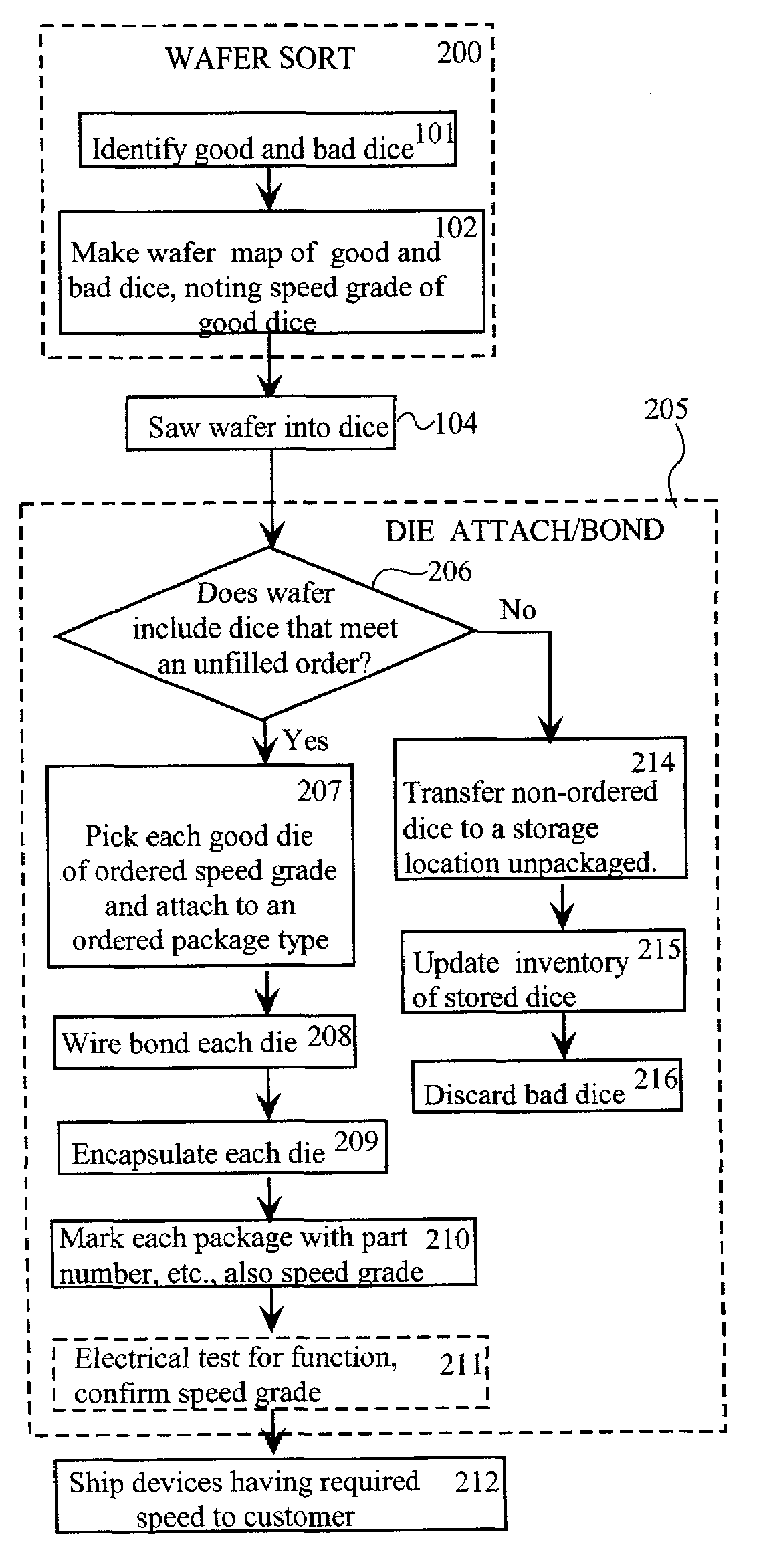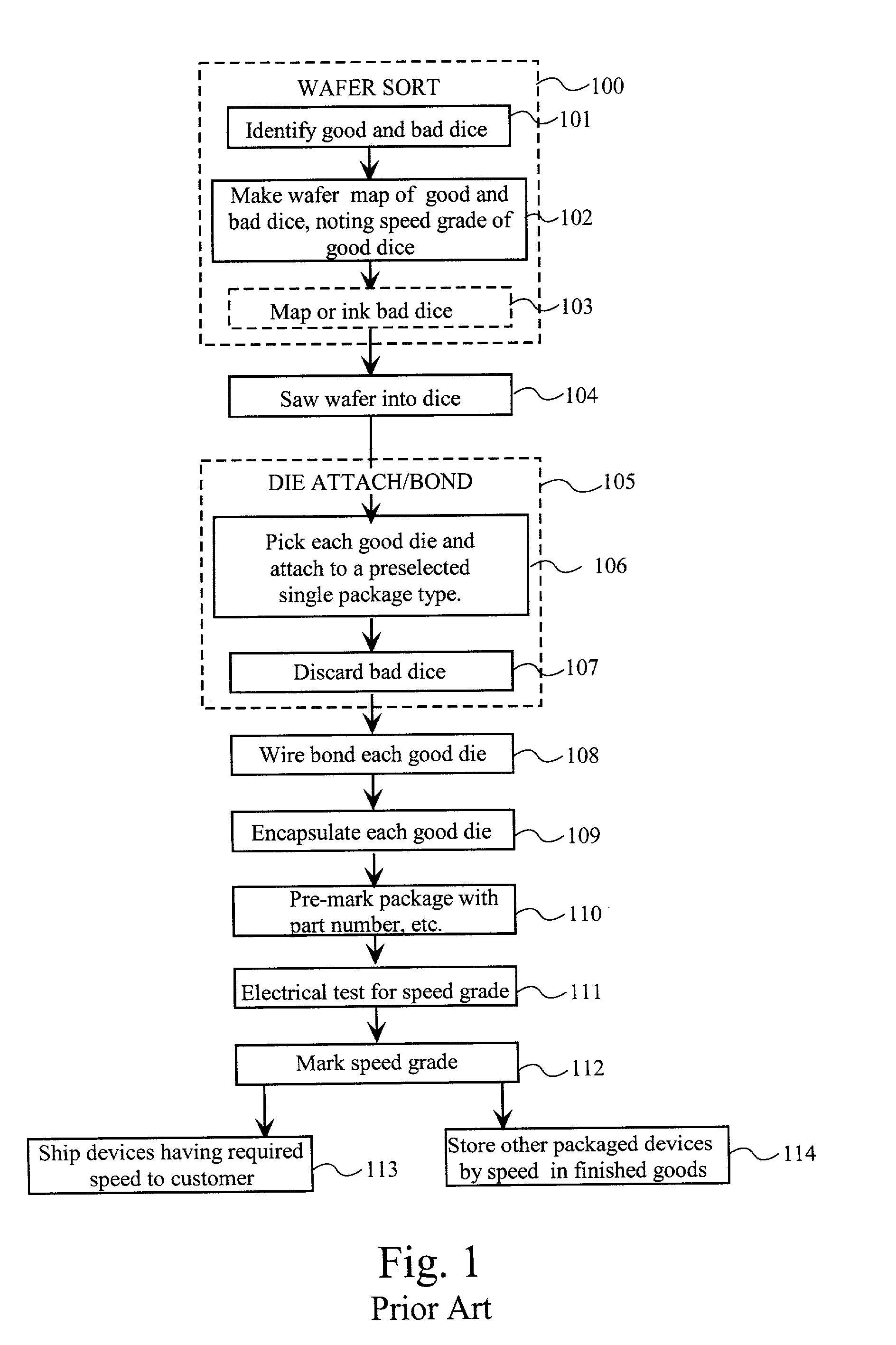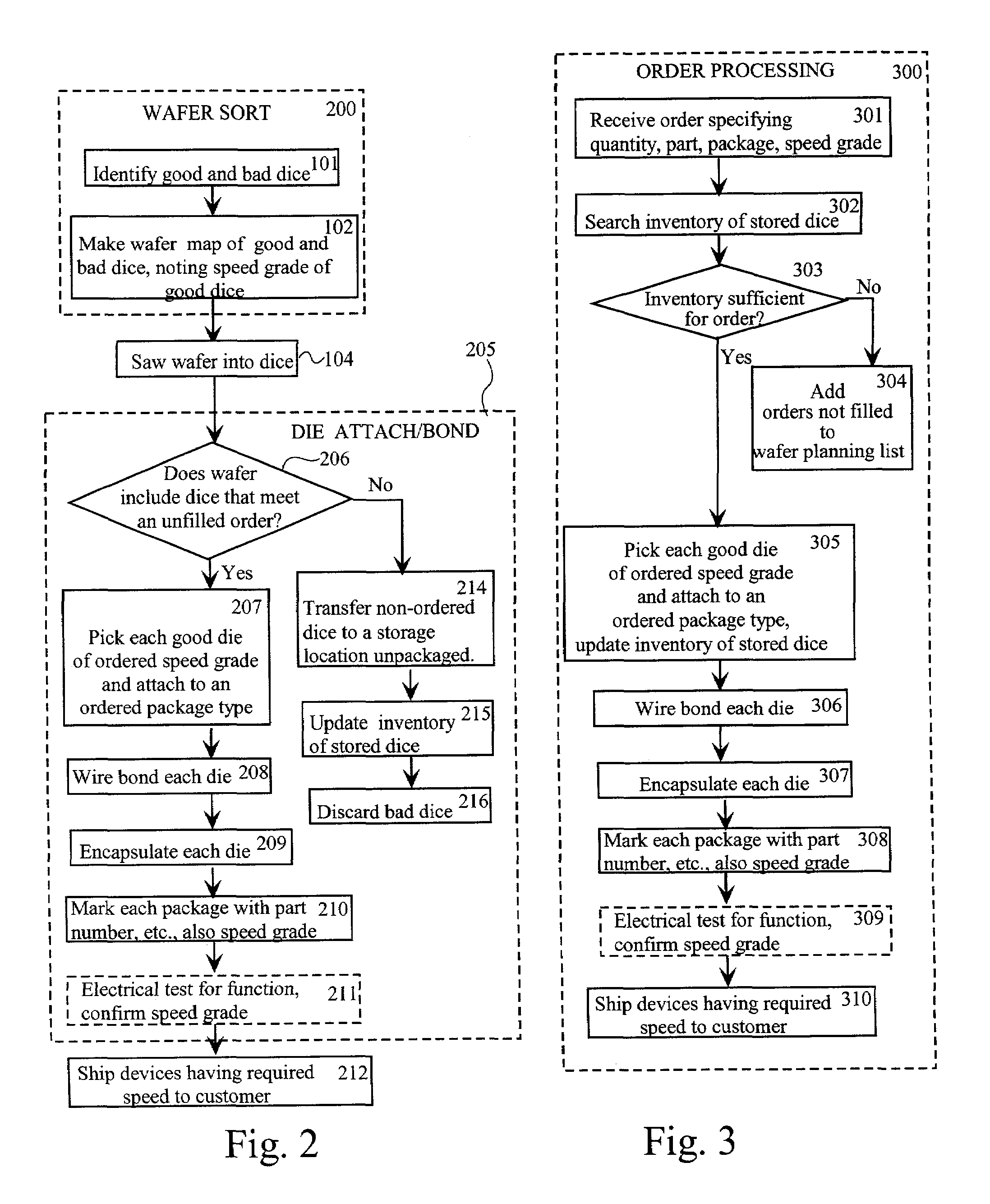Method of sorting dice by speed during die bond assembly and packaging to customer order
- Summary
- Abstract
- Description
- Claims
- Application Information
AI Technical Summary
Benefits of technology
Problems solved by technology
Method used
Image
Examples
Embodiment Construction
[0023]FIG. 2 shows a method according to the invention for processing a die from the completed wafer stage to being shipped to a customer.
[0024]Wafer Sort process 200 begins as in the prior art with step 101 of identifying good and bad dice (chips). Next, at step 102, not only is a record made of how many good dice meet each speed grade, but a map of the wafer is made that indicates the speed grade of each good die on the wafer. This map is stored in a computer and is used later for processing after the wafer has been diced. As in the prior art, at step 104, the wafer is diced.
[0025]Then, according to the invention, die attach / bonding process 205 makes use of this wafer map. The die attach process takes into account what device types and packages have actually been ordered and participates in the process of filling the orders. At step 206, software associated with the die attach and bonding step determines whether the wafer includes dice that can fill outstanding orders. If so, at s...
PUM
 Login to View More
Login to View More Abstract
Description
Claims
Application Information
 Login to View More
Login to View More - R&D
- Intellectual Property
- Life Sciences
- Materials
- Tech Scout
- Unparalleled Data Quality
- Higher Quality Content
- 60% Fewer Hallucinations
Browse by: Latest US Patents, China's latest patents, Technical Efficacy Thesaurus, Application Domain, Technology Topic, Popular Technical Reports.
© 2025 PatSnap. All rights reserved.Legal|Privacy policy|Modern Slavery Act Transparency Statement|Sitemap|About US| Contact US: help@patsnap.com



